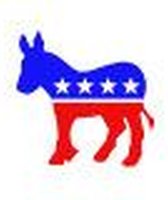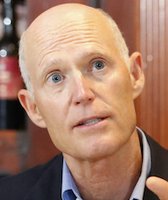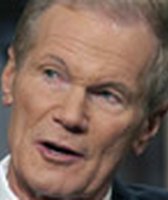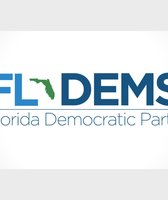Stand up for the facts!
Our only agenda is to publish the truth so you can be an informed participant in democracy.
We need your help.
I would like to contribute
Republicans supporting the House GOP’s effort to repeal and replace Obamacare are pushing back on criticism that the plan would strip health insurance away from an estimated 6 million to 15 million Americans, as Congress awaits additional insight from the nonpartisan Congressional Budget Office.
UPDATE: The CBO released its analysis of the House plan on March 13, 2017. The CBO says the plan would "reduce federal deficits by $337 billion over the coming decade and increase the number of people who are uninsured by 24 million in 2026 relative to current law."
Appearing on the Sunday shows, White House Office of Management and Budget director Mick Mulvaney said the CBO isn’t capable of assessing such a large piece of legislation.
"If the CBO was right about Obamacare to begin with, there'd be 8 million more people on Obamacare today than there actually are," Mulvaney said on This Week. "So, I love the folks at the CBO, they work really hard. They do. Sometimes we ask them to do stuff that they're not capable of doing." Gary Cohn, director of the White House’s National Economic Council, echoed Mulvaney on Fox News Sunday.
For PolitiFact, those claims rate Half True.
Mulvaney has a point that the CBO’s projections for how many people would gain coverage through the Affordable Care Act was higher than reality, but that criticism isn’t enough to undermine the CBO’s ability to analyze the Republican repeal-and-replace bill, experts told us.
The CBO released enrollment projections for the health care law in March 2010. It estimated that 21 million people would purchase coverage through the new insurance exchanges by 2016.
At the end of 2016, more than 11.5 million individuals actually signed up for 2017 coverage, according to the Centers for Medicare and Medicaid Services.
That’s a difference of 9.5 million enrollees, even more than the figure Mulvaney provided.
But the CBO eventually reduced its projection of how many people would get health insurance through the Affordable Care Act’s marketplaces, from 21 million to 13 million. Initially, CBO analysts believed exchange enrollment would be higher in part because employers would drop insurance plans in favor of the marketplaces. That has not occurred.
Experts and independent research typically give the CBO high marks for its analysis of legislation.
"With respect to precise quantitative point estimates, the differences between CBO's estimates and actual experience are well within the range that I would expect given the scope of the change CBO was being asked to analyze," said Matthew Fiedler, a fellow with the Center for Health Policy in Brookings' Economic Studies Program.
Fiedler said that CBO's "big picture" assessment of the impact of the Affordable Care Act on insurance coverage was spot on. Specifically, the agency estimated a very large reduction in the share of people without health insurance that would leave the uninsured rate at a historic low, which is what occurred, he said.
According to a 2015 report from the Commonwealth Fund, the CBO overestimated enrollee total, but still offered projections closer to reality than four other forecasters (the Office of the Actuary of the Centers for Medicare and Medicaid Services, the RAND Corporation, the Urban Institute; and the Lewin Group).
No prediction will ever be perfect, but for the most part, experts who have studied the CBO have found their projections to be largely sound.
For example, the National Tax Journal in 1988 concluded that short-run projections from the CBO do not contain bias. A 2000 report comparing the forecasting of the CBO and the Federal Reserve Board concluded that, "The most accurate forecasting is done by the CBO, with the Fed a close second."
Even the CBO released its own report in November 2015 that looked at how accurate their predictions have been, as well as what factors have contributed to forecasting errors.
On average, between 1983 and 2014, the CBO overestimated two-year revenue forecasts by 1.1 percent and six-year projections by about 5.3 percent.
HHS' Price on Obamacare impact
Elsewhere, Health and Human Services secretary Tom Price claimed on Meet the Press that the number of new people insured as a result of Obamacare is overstated.
"The number of individuals who actually got coverage through the exchange who didn't have coverage before, or who weren't eligible for Medicaid before is relatively small," Price said. "So we've turned things upside down completely for 3 million, or 4 million, or 5 million individuals."
That’s False.
The passage of the Affordable Care Act, or Obamacare, did result in a spate of Medicaid enrollees who were previously eligible for the program (about 3.2 million). But beyond that, Price’s claim falls apart.
Price focused on two pools of people -- those who benefited from the plan to expand Medicaid and uninsured Americans who purchased coverage through a federal or state exchange or marketplace.
Through that lens, Price’s figures are off.
Nonpartisan health care analysts at the Kaiser Family Foundation have concluded that, as of March 2016, more than 11 million Americans have gained access to health care as part of the Medicaid expansion. As we noted, an additional 3.2 million Americans signed up for Medicaid but were previously eligible.
Finding data on the number of previously uninsured people who signed up for care through a health care exchange is more challenging. But the numbers that do exist further undercut Price.
In 2015, researchers at the nonpartisan RAND Corporation estimated that 4.1 million previously uninsured Americans had gained access through a health care exchange or marketplace.
That’s roughly 15 million Americans who weren’t insured who now are, which is three to five times the number Price used.
Sherry A. Glied, dean of the Robert F. Wagner School of Public Service at New York University, recently examined how much of a factor the Affordable Care Act is playing in cutting the uninsured rate.
Looking at the Affordable Care Act’s first open enrollment period (2013-14), Glied concluded that the health care law explained about 76 percent of the decline in the uninsured rate. Glied told us that translates to 9.8 million more people covered as a result of the health care law’s policies in 2014.
"Since then, the uninsurance rate has dropped further," Glied said, which would mean the pool of people covered because of Affordable Care Act policies has grown.
Our Sources
See individual fact-checks

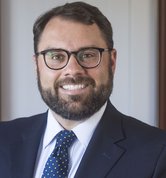

 Politifact Rating:
Politifact Rating: 
 Politifact Rating:
Politifact Rating: 

